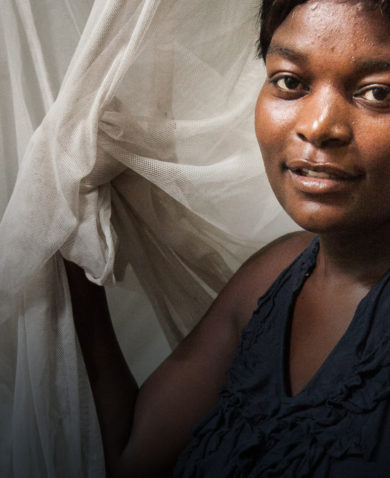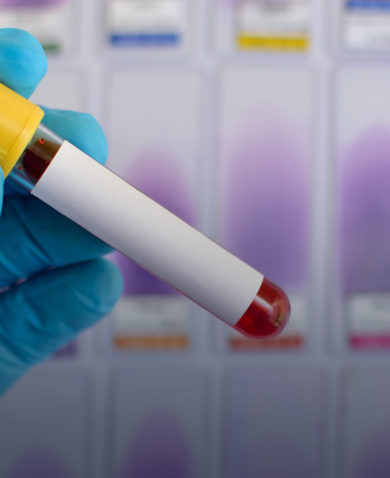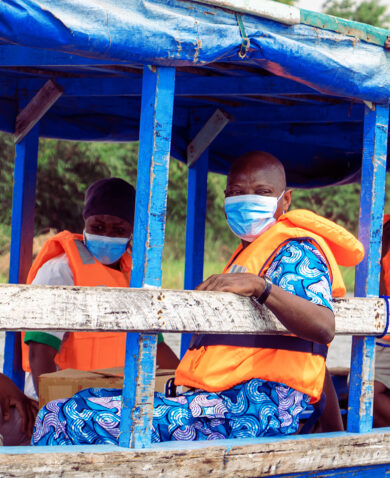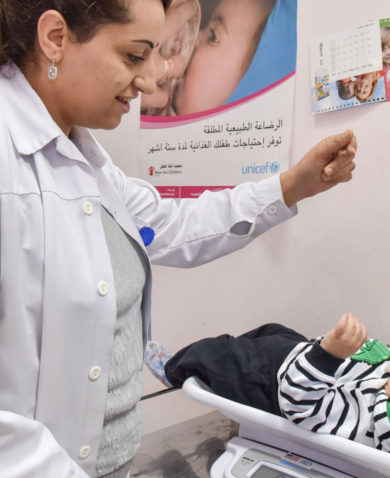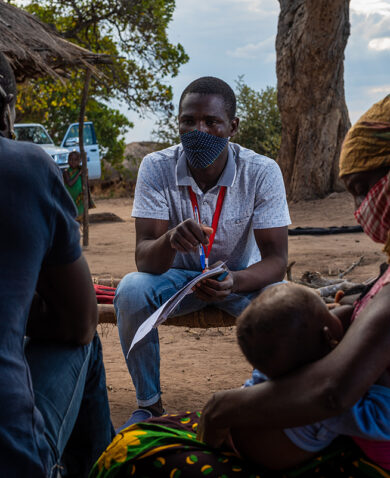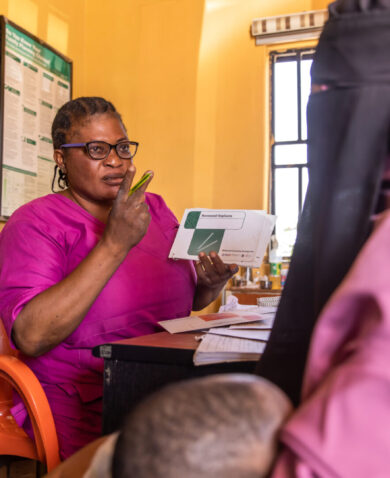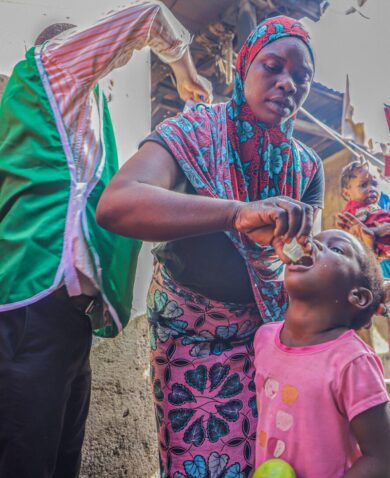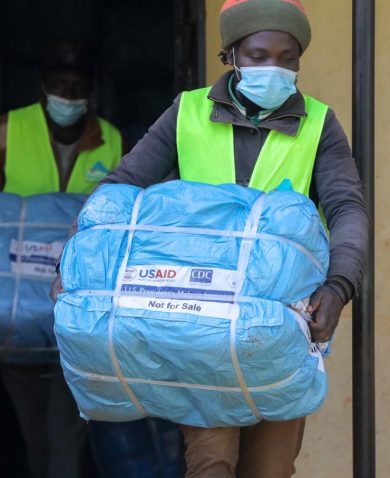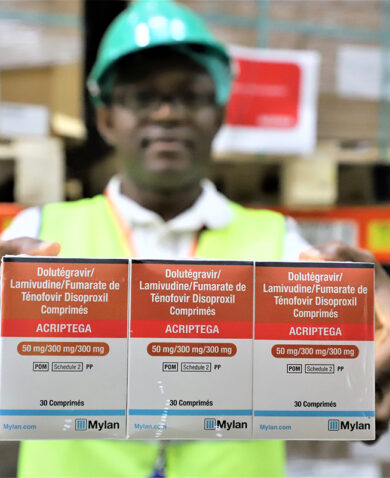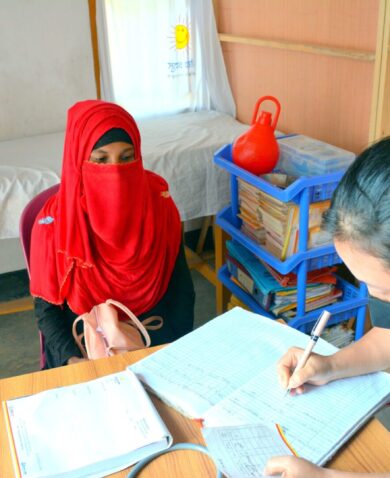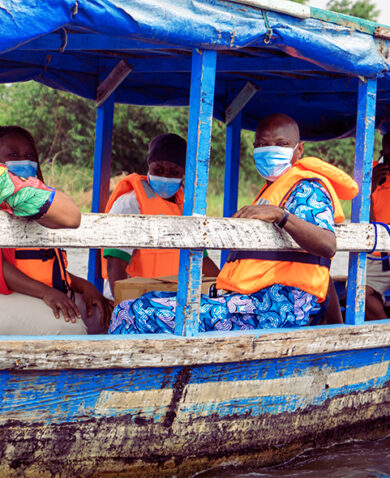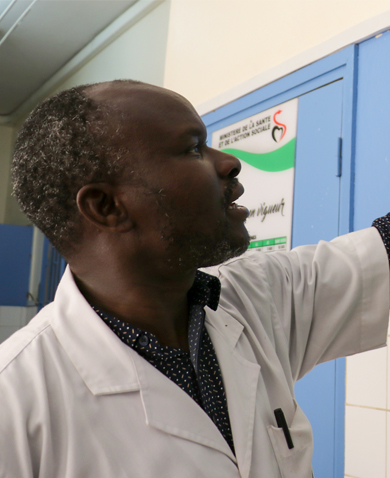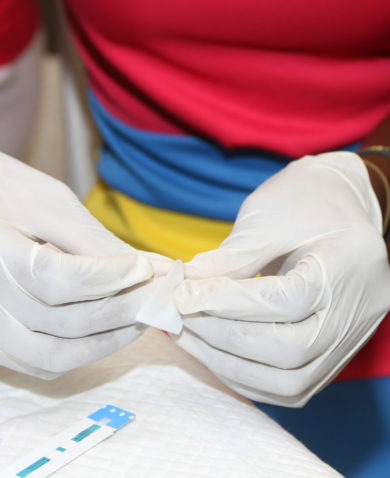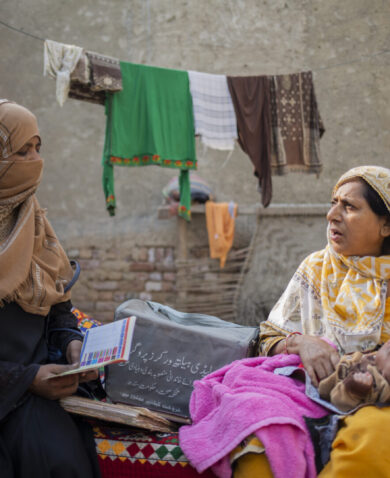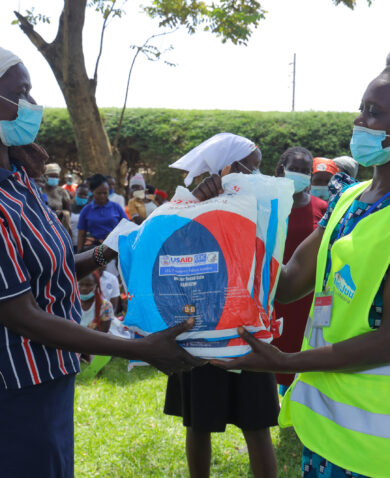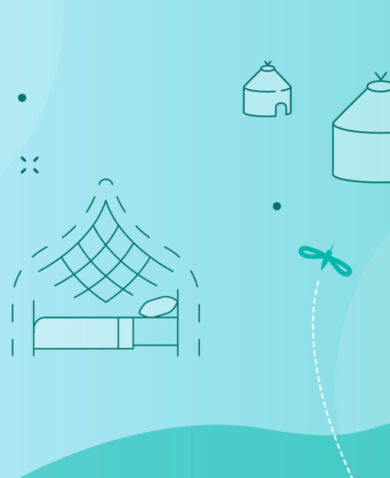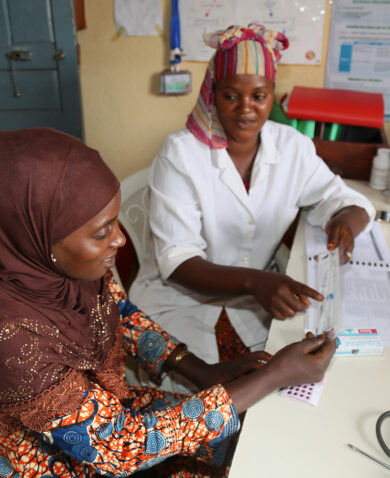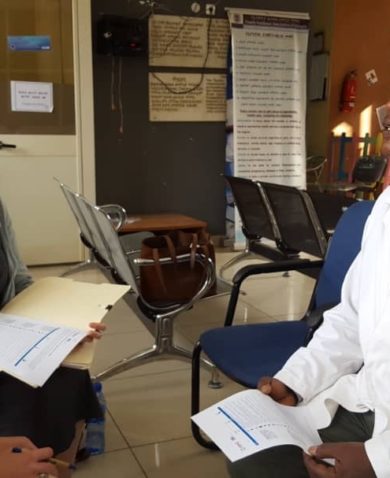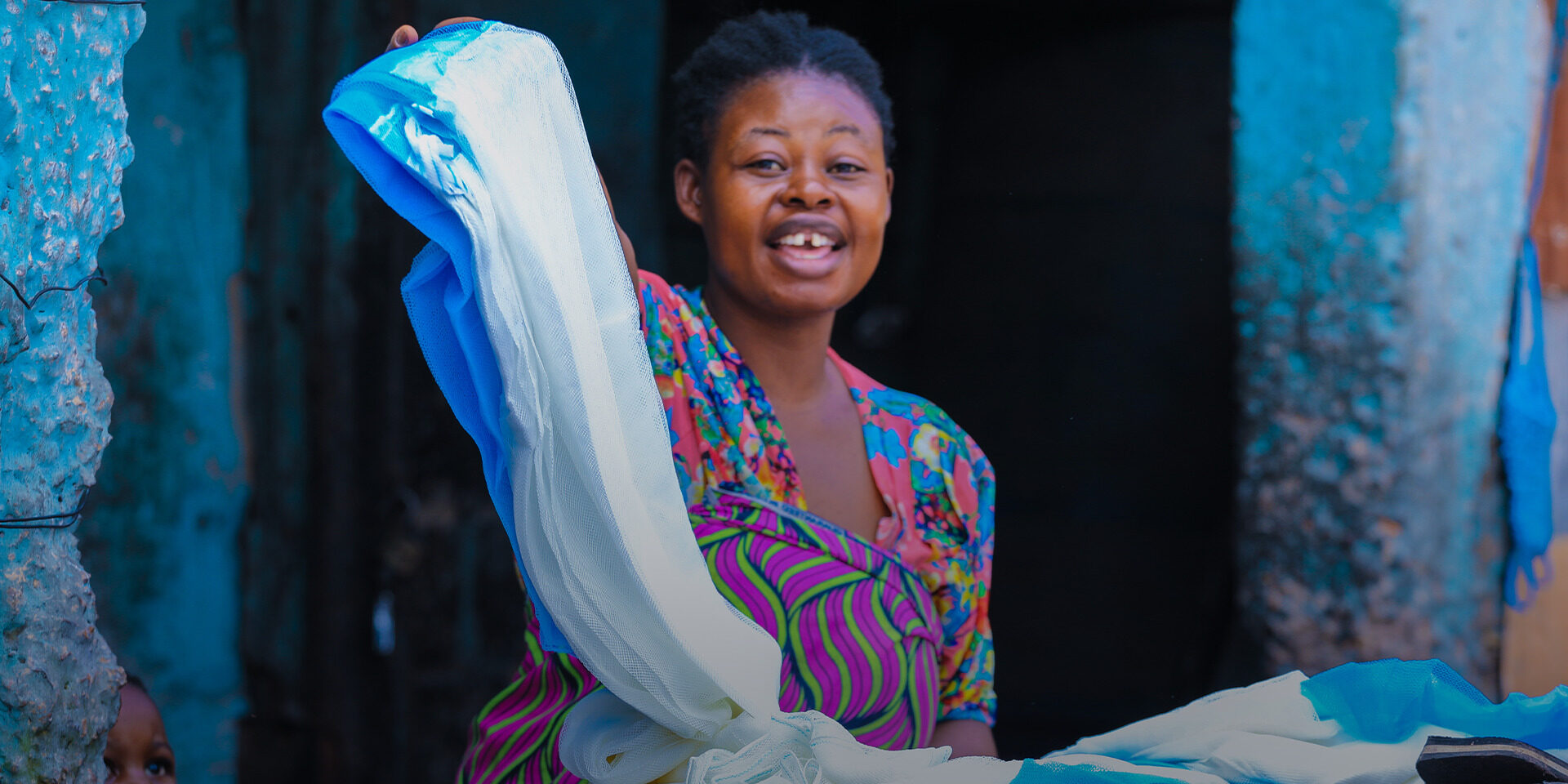
Beyond Bed Nets: How Gender Integration Can Improve Malaria Control
March 9, 2023 | 5 Minute ReadUSAID’s End Malaria Project in DRC is working to build gender-balanced ITN distribution teams that can better respond to the unique needs of different communities.
For years, Marthe Ilunga relied on insecticides and nightly mosquito hunting to keep her children from coming down with malaria in her home in the Democratic Republic of Congo (DRC). But success was limited: two of her three children had recurrent fevers, requiring Marthe to regularly seek care for them at the Dilala Health Center in Kolwezi, a town three kilometers away.
Her story is not unusual in the DRC, where, as of 2021, there were an estimated 30,518,545 cases and 78,847 malaria-related deaths per the World Health Organization (WHO)’s 2022 World Malaria Report. Despite this burden, many households, like Marthe’s, struggle to access insecticide-treated bed nets (ITNs) and lack comprehensive information on effectively using them to prevent mosquito bites and subsequent malaria transmission.
Through the USAID End Malaria Project, the U.S. President’s Malaria Initiative (PMI) and Chemonics support the DRC’s National Malaria Control Program (NMCP) with ITN planning and distribution. For this, the project examines the role of gender norms in ITN campaign implementation and effectiveness at two levels: gender representation among project and campaign staff, including community-based distributors; and the effects of community gender norms and perceptions on the uptake and use of ITNs before the mass distribution campaigns.
By supporting provincial leadership to implement community diagnostics, the project and the NMCP collect province-specific data on ITN barriers to access and use, including gender-related factors. With the findings, the project then designs a locally driven approach using communications strategies and materials for each mass campaign. This tailored approach helps the NMCP implement effective ITN campaigns that address gender gaps and community perceptions.
Community Diagnostic Facilitates Gender Integration During ITN Distribution Campaigns
The Process
The first campaign-related activity completed is the pre-campaign community diagnostic. It aims to identify the root barriers to ITN access and use, including management of ITNs within households, while capturing differences in perceptions and norms among social groups. The diagnostic activity starts with a desk review of literature and data from previous campaigns, followed by in-depth interviews with provincial authorities and community opinion leaders to gather perceptions about campaign organization and implementation. The project then conducts community focus group discussions with diverse groups, including pregnant women, housewives, fathers, fishermen, gardeners, and others. In partnership with the WHO, Breakthrough Action, provincial authorities, religious leaders, and NMCP representatives, project staff then use the information gathered to tailor the communication materials and messaging for the upcoming campaign, while also ensuring that information on the importance of women’s involvement at the provincial level and men’s participation at the household level is accessible.
The Findings and Adaptations
Findings show that women are responsible for receiving, installing, and maintaining ITNs, but have little to no decision-making power regarding use. We also found that men have often decided that ITNs may be used or sold for other purposes like fishing or gardening. Additionally, cultural norms inhibit women from engaging with male campaign workers during a door-to-door campaign without a man present, and that men historically dominate ITN mass distribution campaign teams in DRC. Despite the DRC’s gender parity law [Law #15/013 of August 1, 2015] requiring at least 30% female representation within any government-sponsored activity, men are more likely to take the community distributor roles due to financial compensation and social norms related to women engaging with men outside their households. Before implementing campaigns in Kwango, Lualaba, Kasai Central, Kasai, and Kasai Oriental provinces in 2021-2023, the project consistently encountered beliefs on the unconventional nature of including women in campaigns. Women’s limited representation on campaign teams can hinder the campaign’s effectiveness, but a gender-balanced team can also better reach single female parent-led households and respond to the unique needs of different communities.

The project also found an unanticipated gender barrier to ITN use among men. Many believe that ITNs are only meant for women and children, who are targeted for education during school campaigns, continuous distribution channels at antenatal care visits (ANC), and the country’s expanded program on immunization (EPI). This belief is further exacerbated by the fact that data about the use of ITNs, as well as communication materials, tend to focus on women and children under five (Figure 1). Based on these findings, USAID’s End Malaria Project helped the NMCP to adapt its mass campaigns to involve more women at all stages of campaign planning and implementation and to improve information, education, and communication materials to feature men participating in the management and use of ITNs.
Within two years and across seven campaigns, USAID’s End Malaria Project has advanced the national gender strategy by deliberately engaging women and women’s groups, increasing the percentage of women involved in campaign activities from 9% in 2021 to 27% in 2022 with the goal of reaching 40% by 2026. Women are now represented in community distribution teams and provincial-level activities to ensure gender-balanced perspectives throughout the campaigns. Having female campaign workers better enables the engagement of women as well as men in door-to-door outreach and promotion of collaborative ITN management.
Ensuring women’s participation at the provincial level, where few women occupy high-level administrative positions, better enables discussions about deconstructing traditional beliefs in campaign implementation approaches. Women are also well-represented among project staff, which had been part of the project’s implementation strategy from the outset. On a national level, the NMCP worked with the project to modify its communication materials to convey to men the importance of collaborative management of ITNs. This included revising the images in communication materials to include both a man and a woman managing and sleeping under an ITN together (Figure 2).
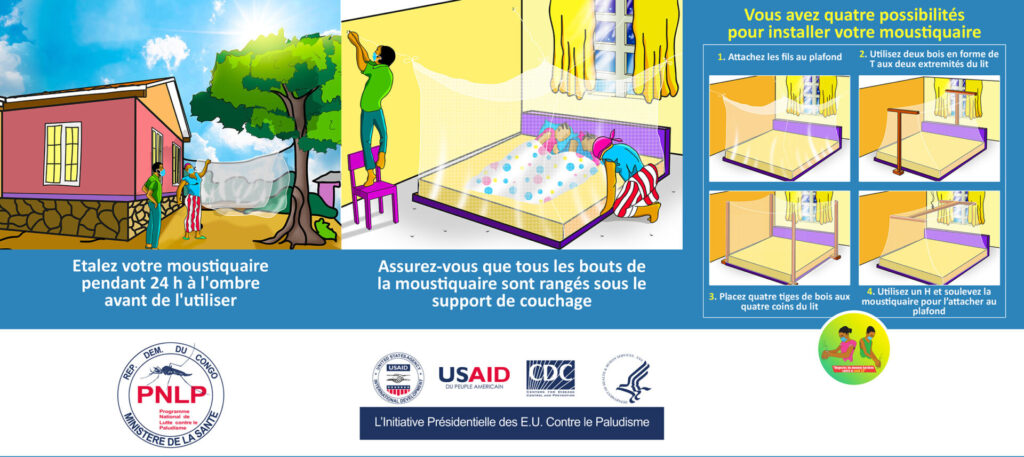
Post-Campaign Assessment
Following the implementation of the ITN distribution campaign, the project obtained mostly positive feedback on the experience of including the new communication messages and materials addressing this critical barrier to men’s engagement with ITNs.
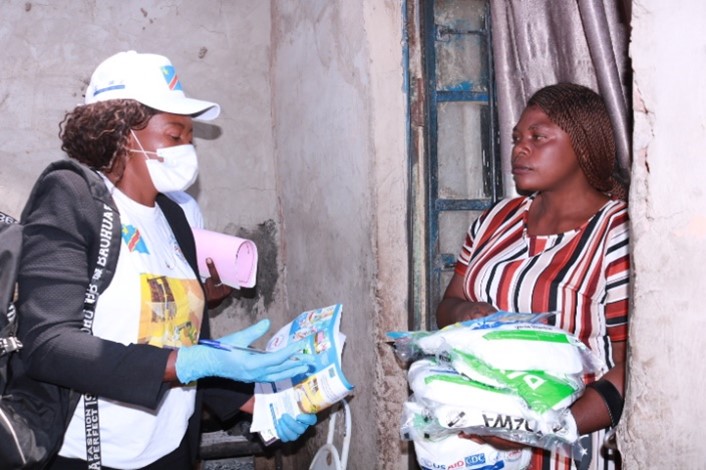
Thanks to the revised campaign implementation and communication materials, in October 2021, Marthe and her family received ITNs. The entire family, including her husband, Jacques, now sleeps under an ITN. Marthe and Jacques work together to wash and reinstall their ITNs every three months, and Marthe’s visits to the Dilala Health Center have decreased.
When asked about his participation in ITN management and installation, Jacques said, “The advice from the community and the various materials they presented to us convinced me to participate in the management of the ITNs in our household. I also set an example for my children by not only installing an ITN in our room but [also because] my wife and I sleep under it every night.”
More than a year later, Marthe says she is at peace concerning her children’s health. “They are healthier and go to school regularly.”
Photo: A woman receives an ITN from a community worker during the launch ceremony of the Kasai Oriental mass campaign on February 20th, 2023. Credit: Simplice Onoya.
Posts on the blog represent the views of the authors and do not necessarily represent the views of Chemonics.











